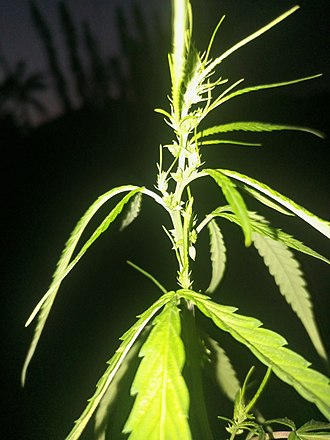Indian hemp
Indian Hemp refers to a plant species known scientifically as Cannabis sativa. Historically, the term has been used to describe the non-psychoactive varieties of Cannabis sativa that are cultivated primarily for the fibers, known as hemp, which are used in making ropes, fabrics, and other materials. However, Cannabis sativa is also well-known for its psychoactive varieties, which are used both medicinally and recreationally for their cannabinoid content, including THC (tetrahydrocannabinol) and CBD (cannabidiol).
Uses
Indian Hemp has a wide range of uses, which can be broadly categorized into industrial, medicinal, and recreational.
Industrial Uses
The fibers from Indian Hemp, or hemp, are known for their strength and durability. They are used in the production of a variety of goods, including textiles, rope, paper, and biodegradable plastics. The seeds of the hemp plant are also used in making hemp oil, which can be consumed for its nutritional benefits or used in products like paints and moisturizers.
Medicinal Uses
Medicinally, components of Cannabis sativa, particularly CBD, have been used to treat a variety of conditions, including chronic pain, epilepsy, and anxiety. CBD does not have the psychoactive effects that THC does, making it an appealing option for individuals seeking relief without the high associated with traditional marijuana use.
Recreational Uses
The psychoactive varieties of Cannabis sativa are used recreationally for their effects on the mind, including relaxation and euphoria. The recreational use of cannabis is subject to legal restrictions in many countries, although there has been a trend towards legalization and decriminalization in some parts of the world.
Cultivation
The cultivation of Indian Hemp varies depending on the intended use of the plant. Industrial hemp is grown for its fibers and seeds and is typically cultivated in large fields with plants spaced widely apart to encourage branching and maximize fiber production. Psychoactive cannabis, on the other hand, is often grown in controlled environments to optimize the growth of the flowers, which contain the highest concentrations of cannabinoids.
Legal Status
The legal status of Indian Hemp varies significantly from country to country. In some places, the cultivation and use of hemp for industrial purposes are legal, while the cultivation and use of psychoactive cannabis are restricted or prohibited. However, there is a growing movement towards the legalization of cannabis for medicinal and recreational purposes, reflecting changing attitudes towards the plant.
Conclusion
Indian Hemp, or Cannabis sativa, is a versatile plant with a wide range of uses, from industrial applications to medicinal and recreational uses. Its legal status continues to evolve, reflecting changing societal attitudes towards cannabis and its derivatives.
Transform your life with W8MD's budget GLP-1 injections from $125.
W8MD offers a medical weight loss program to lose weight in Philadelphia. Our physician-supervised medical weight loss provides:
- Most insurances accepted or discounted self-pay rates. We will obtain insurance prior authorizations if needed.
- Generic GLP1 weight loss injections from $125 for the starting dose.
- Also offer prescription weight loss medications including Phentermine, Qsymia, Diethylpropion, Contrave etc.
NYC weight loss doctor appointments
Start your NYC weight loss journey today at our NYC medical weight loss and Philadelphia medical weight loss clinics.
- Call 718-946-5500 to lose weight in NYC or for medical weight loss in Philadelphia 215-676-2334.
- Tags:NYC medical weight loss, Philadelphia lose weight Zepbound NYC, Budget GLP1 weight loss injections, Wegovy Philadelphia, Wegovy NYC, Philadelphia medical weight loss, Brookly weight loss and Wegovy NYC
|
WikiMD's Wellness Encyclopedia |
| Let Food Be Thy Medicine Medicine Thy Food - Hippocrates |
Medical Disclaimer: WikiMD is not a substitute for professional medical advice. The information on WikiMD is provided as an information resource only, may be incorrect, outdated or misleading, and is not to be used or relied on for any diagnostic or treatment purposes. Please consult your health care provider before making any healthcare decisions or for guidance about a specific medical condition. WikiMD expressly disclaims responsibility, and shall have no liability, for any damages, loss, injury, or liability whatsoever suffered as a result of your reliance on the information contained in this site. By visiting this site you agree to the foregoing terms and conditions, which may from time to time be changed or supplemented by WikiMD. If you do not agree to the foregoing terms and conditions, you should not enter or use this site. See full disclaimer.
Credits:Most images are courtesy of Wikimedia commons, and templates, categories Wikipedia, licensed under CC BY SA or similar.
Contributors: Prab R. Tumpati, MD

